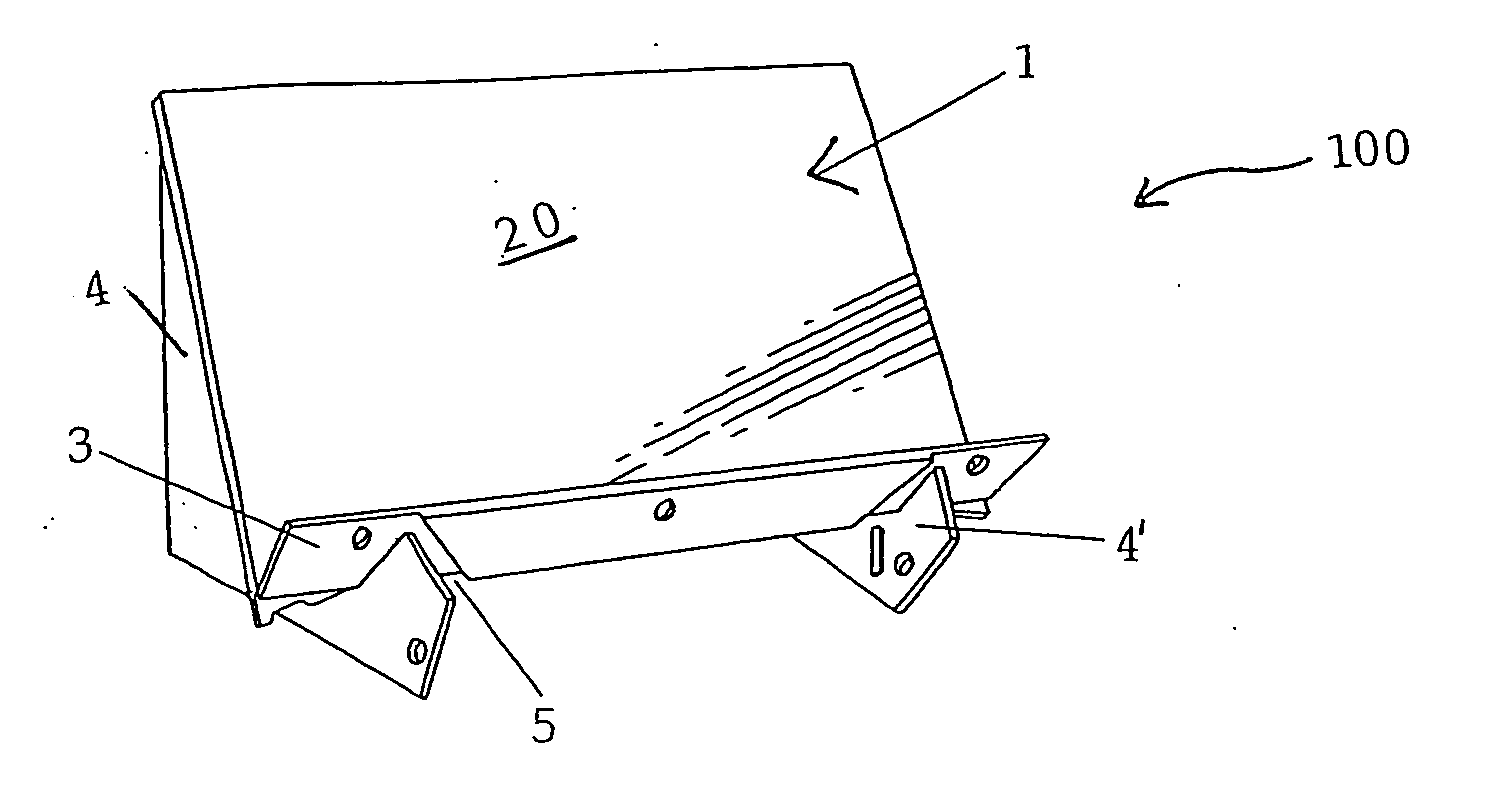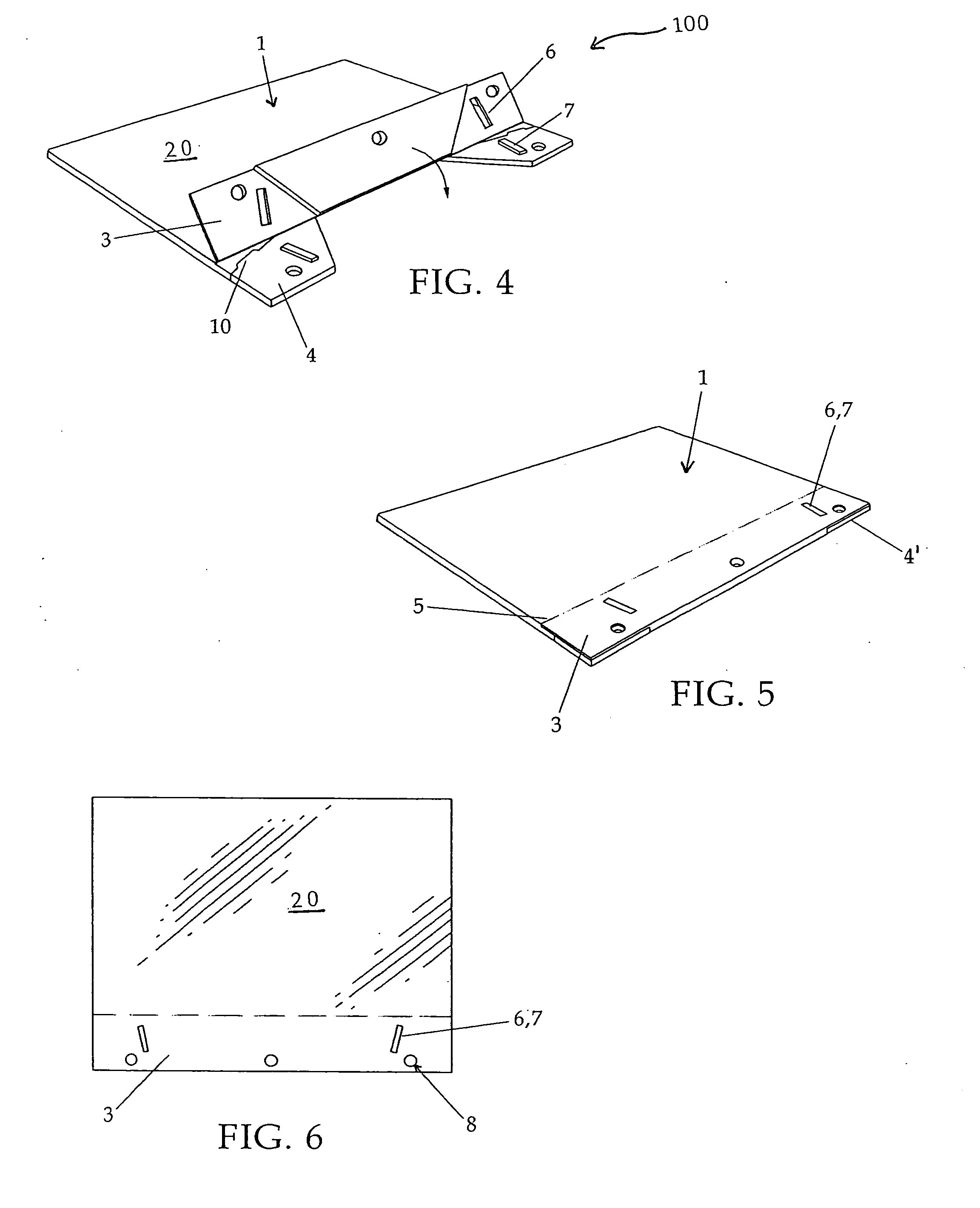Foldable book holder
a book stand and book holder technology, applied in the field of book stands, can solve the problems of type, affecting the ability of people to write, and being too large and unmanageable for satisfactory storage, and achieve the effects of convenient storage, stable support system, and preventing easy bending or collapsing
- Summary
- Abstract
- Description
- Claims
- Application Information
AI Technical Summary
Benefits of technology
Problems solved by technology
Method used
Image
Examples
Embodiment Construction
[0037] In an especially preferred support system for the book stand 100, shown to best advantage in FIGS. 8, 11 and 12, the support members are distanced from each other and slanted, so as to produce a broad, stable base that resists tipping or other movement when torque is applied to one end or another of the book stand 100. In FIG. 8, the shelf member 3 is adjoined to rectangular panel 1 via a horizontal hinge 5, by which hinge, the shelf member 3 can be swung towards the front surface 20 of rectangular panel 1, to be at angle A relative to panel 1. Preferably, shelf member 3 is slanted upwards at an angle B relative to the plane of the table T (and relative to horizontal plane H in FIG. 8) that allows the shelf to retain the book 15 against the rectangular panel 1 and prevent the book 15 from sliding off the shelf 3. For example, in the embodiment in FIG. 8, the shelf angle B is about 45.degree. relative to the plane of the table. Alternatively, the inventor envisions that shelve...
PUM
 Login to View More
Login to View More Abstract
Description
Claims
Application Information
 Login to View More
Login to View More - R&D
- Intellectual Property
- Life Sciences
- Materials
- Tech Scout
- Unparalleled Data Quality
- Higher Quality Content
- 60% Fewer Hallucinations
Browse by: Latest US Patents, China's latest patents, Technical Efficacy Thesaurus, Application Domain, Technology Topic, Popular Technical Reports.
© 2025 PatSnap. All rights reserved.Legal|Privacy policy|Modern Slavery Act Transparency Statement|Sitemap|About US| Contact US: help@patsnap.com



